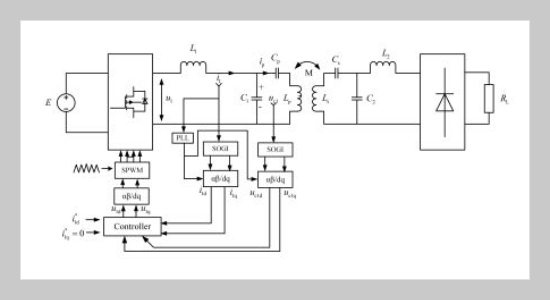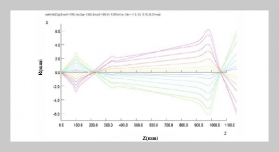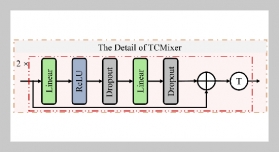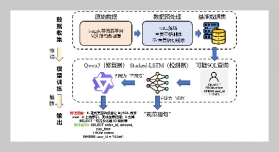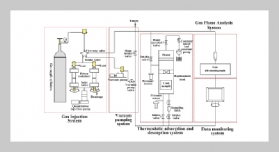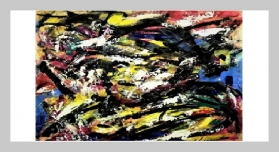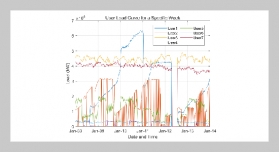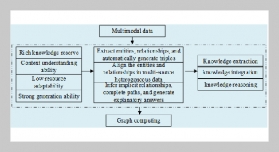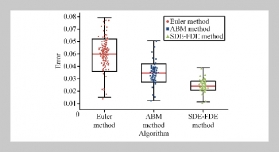REFERENCES
- [1] A. Mahesh, B. Chokkalingam, and L. Mihet-Popa, (2021) “Inductive Wireless Power Transfer Charging for Electric Vehicles–A Review" IEEE Access 9: 137667–137713. DOI: 10.1109/ACCESS.2021.3116678.
- [2] P. K. Chittoor and B. C. “Solar Integrated Wireless Drone Charging System for Smart City Applications”. In: 2021 IEEE 6th International Conference on Computing, Communication and Automation (ICCCA). IEEE. 2021, 407–412. DOI: 10.1109/ICCCA52192.2021.9666263.
- [3] K. A. Kalwar, M. Aamir, and S. Mekhilef, (2015) “Inductively coupled power transfer (ICPT) for electric vehicle charging–A review" Renewable and Sustainable Energy Reviews 47: 462–475. DOI: 10.1016/j.rser.2015.03.040.
- [4] P. K. Chittoor, B. Chokkalingam, and L. Mihet-Popa, (2021) “A review on UAV wireless charging: Fundamentals, applications, charging techniques and standards" IEEE access 9: 69235–69266. DOI: 10.1109/ACCESS.2021.3077041.
- [5] S. Chatterjee, A. Iyer, C. Bharatiraja, I. Vaghasia, and V. Rajesh, (2017) “Design optimisation for an efficient wireless power transfer system for electric vehicles" Energy Procedia 117: 1015–1023. DOI: 10.1016/j.egypro.2017.05.223.
- [6] P. K. Chittoor and C. Bharatiraja, (2022) “Drone Operated Bidirectional Wireless Charging System for Energy Constrained Devices in Smart Farming Applications" ECS Transactions 107(1): 11867. DOI: 10.1149/10701.11867ecst.
- [7] M. Aganti and C. Bharatiraja, (2022) “Integrated Double-Sided LCC Compensation Topology for an Electric Vehicle Wireless Charging System" ECS Transactions 107(1): 15587. DOI: 10.1149/10701.15587ecst.
- [8] M. Aganti and C. Bharatiraja, (2022) “New Magnetic Coupling Pad with Circular Geometry for Wireless Power Transfer Applications" ECS Transactions 107(1): 15965. DOI: 10.1149/10701.15965ecst.
- [9] R. Narayanamoorthi, A. V. Juliet, and B. Chokkalingam, (2019) “Cross interference minimization and simultaneous wireless power transfer to multiple frequency loads using frequency bifurcation approach" IEEE Transactions on Power Electronics 34(11): 10898–10909. DOI: 10.1109/TPEL.2019.2898453.
- [10] Y. M. Roshan and E. J. Park, (2017) “Design approach for a wireless power transfer system for wristband wearable devices" IET Power Electronics 10(8): 931–937. DOI: 10.1049/iet-pel.2016.0616.
- [11] W. Zhang, X. Fan, Y. Zheng, and X. Zhang. “Application of Sliding Mode Control with Leakage Loop Modulation in DynamicWireless Charging System of Electric Vehicle”. In: 2019 12th International Symposium on Computational Intelligence and Design (ISCID). 1. IEEE. 2019, 262–265. DOI: 10.1109/ISCID.2019.00067.
- [12] W. Lihao and Z. Bo, (2020) “Overview of static wireless charging technology for electric vehicles: part I" Transactions of China Electrotechnical Society 35(6): 1153–1165. DOI: 10.19595/j.cnki.1000-6753.tces.190106.
- [13] X. Li and X. Li, (2020) “Passivity-based control for movable multi-load inductively coupled power transfer system based on PCHD model" IEEE Access 8: 100810–100823. DOI: 10.1109/ACCESS.2020.2997989.
- [14] X. Dai and Y. Sun, (2011) “Study on energy injection control method for inductive power transfer system" J. Univ. Electron. Sci. Technol. China 40: 69–72.
- [15] J. Zhou, F. Wu, and Z. Rong, (2015) “Modeling and Analysis of LCL Type IPT System with Generalized State Space Averaging Method" Bulletin of Science and Technology:
- [16] J.-J.Wu, X.-F. Sun, andW.-y.Wu, (2011) “Study of Modeling of Resonant Converter Based on Extended Describing Function Method" Dianli Dianzi Jishu/ Power Electronics 45(4): 22–24.
- [17] S. Xujian and Z. Bo, (2017) “Energy model and characteristic analysis for inductively coupled power transfer system" Automation of Electric Power Systems 41(2): 28–32. DOI: 10.7500/AEPS20161007002.
- [18] T.-D. Yeo, D. Kwon, S.-T. Khang, and J.-W. Yu, (2016) “Design of maximum efficiency tracking control scheme for closed-loop wireless power charging system employing series resonant tank" IEEE Transactions on Power Electronics 32(1): 471–478. DOI: 10.1109/TPEL.2016.2523121.
- [19] H. Li, J. Li, K. Wang, W. Chen, and X. Yang, (2014) “A maximum efficiency point tracking control scheme for wireless power transfer systems using magnetic resonant coupling" IEEE Transactions on Power Electronics 30(7): 3998–4008. DOI: 10.1109/TPEL.2014.2349534.
- [20] K. Song, Z. Li, J. Jiang, and C. Zhu, (2017) “Constant current/voltage charging operation for series–series and series–parallel compensated wireless power transfer systems employing primary-side controller" IEEE Transactions on Power Electronics 33(9): 8065–8080. DOI:10.1109/TPEL.2017.2767099.
- [21] S. Assawaworrarit, X. Yu, and S. Fan, (2017) “Robust wireless power transfer using a nonlinear parity–timesymmetric circuit" Nature 546(7658): 387–390. DOI: 10.1038/nature22404.
- [22] W. Li, H. Zhao, J. Deng, S. Li, and C. C. Mi, (2015) “Comparison study on SS and double-sided LCC compensation topologies for EV/PHEV wireless chargers" IEEE Transactions on Vehicular Technology 65(6): 4429–4439. DOI: 10.1109/TVT.2015.2479938.
- [23] V. P. Galigekere, J. Pries, O. C. Onar, G.-J. Su, S. Anwar, R.Wiles, L. Seiber, and J.Wilkins. “Design and implementation of an optimized 100 kW stationary wireless charging system for EV battery recharging”. In: 2018 IEEE Energy Conversion Congress and Exposition (ECCE). IEEE. 2018, 3587–3592. DOI: 10.1109/ECCE.2018.8557590.
- [24] N. Ali, Z. Liu, Y. Hou, H. Armghan, X. Wei, and A. Armghan, (2020) “LCC-S based discrete fast terminal sliding mode controller for efficient charging through wireless power transfer" Energies 13(6): 1370. DOI: 10.3390/en13061370.
- [25] J. Zhao, Z. Zhang, and K. Zhang, (2022) “H" Diangong Jishu Xuebao/Transactions of China Electrotechnical Society 37(3): 566–577.
- [26] A. Lassioui, H. EL Fadil, A. Rachid, T. Bouanou, and F. Giri, (2021) “Adaptive Output Feedback Nonlinear Control of a Wireless Power Transfer Charger for Battery Electric Vehicle" Journal of Control, Automation and Electrical Systems 32(2): 492–506. DOI: 10.1007/s40313-020-00670-0.
- [27] X. Hu, Y.Wang, S. Lv, X. Dong, T. Chen, Y. Jiang, and P. Xu. “Discrete time modeling of wireless power transfer system using LCC compensation topology”. In: 2019 10th International Conference on Power Electronics and ECCE Asia (ICPE 2019-ECCE Asia). IEEE. 2019, 968–973.
- [28] C. Feibin, M. Ruikun, L. Yong, et al., (2018) “Efficiency optimization of three-coil structure wireless power transfer system based on frequency-varied control" Transactions of China Electrotechnical Society 33(S2): 313–320. DOI: 10.19595/j.cnki.1000-6753.tces.180884.
- [29] Y. Chen, H. Zhang, S.-J. Park, and D.-H. Kim, (2019) “A switching hybrid LCC-S compensation topology for constant current/voltage EV wireless charging" Ieee Access 7: 133924–133935. DOI: 10.1109/ACCESS.2019.2941652.
- [30] R. V. Meshram, M. Bhagwat, S. Khade, S. R. Wagh, A. M. Stankovic, and N. M. Singh, (2017) “Portcontrolled phasor Hamiltonian modeling and IDA-PBC control of solid-state transformer" IEEE Transactions on Control Systems Technology 27(1): 161–174. DOI:10.1109/TCST.2017.2761866.
- [31] Y. I. Son and I. H. Kim, (2011) “Complementary PID controller to passivity-based nonlinear control of boost converters with inductor resistance" IEEE Transactions on control systems technology 20(3): 826–834. DOI:10.1109/TCST.2011.2134099.
- [32] J. Zeng, Z. Zhang, and W. Qiao, (2013) “An interconnection and damping assignment passivity-based controller for a DC–DC boost converter with a constant power load" IEEE Transactions on Industry Applications 50(4): 2314–2322. DOI: 10.1109/TIA.2013.2290872.
- [33] H. Mohomad, S. Saleh, and L. Chang, (2017) “Disturbance estimator-based predictive current controller for single-phase interconnected PV systems" IEEE Transactions on Industry Applications 53(5): 4201–4209. DOI: 10.1109/TIA.2017.2716363.
- [34] M. Hilairet, M. Ghanes, O. Béthoux, V. Tanasa, J. P. Barbot, and D. Normand-Cyrot, (2013) “A passivity based controller for coordination of converters in a fuel cell system" Control engineering practice 21(8): 1097–1109. DOI: 10.1016/j.conengprac.2013.04.003.
- [35] Y. Liu, J. Xu, Z. Shuai, Y. Li, G. Cui, S. Hu, and B. Xie, (2020) “Passivity-based decoupling control strategy of single-phase LCL-type VSRs for harmonics suppression in railway power systems" International Journal of Electrical Power & Energy Systems 117: 105698. DOI:10.1016/j.ijepes.2019.105698.
- [36] O. D. Montoya, W. Gil-González, and A. Garces, (2019) “Distributed energy resources integration in single phase microgrids: An application of IDA-PBC and PIPBC approaches" International Journal of Electrical Power & Energy Systems 112: 221–231. DOI: 10.1016/j.ijepes.2019.04.046.
- [37] K. Nunna, M. Sassano, and A. Astolfi, (2015) “Constructive interconnection and damping assignment for port-controlled Hamiltonian systems" IEEE Transactions on Automatic Control 60(9): 2350–2361. DOI: 10.1109/TAC.2015.2400663.
- [38] Z. Liu, Z. Geng, and X. Hu, (2018) “An approach to suppress low frequency oscillation in the traction network of high-speed railway using passivity-based control" IEEE Transactions on Power Systems 33(4): 3909–3918. DOI: 10.1109/TPWRS.2018.2789450.
- [39] Z. Liu, Z. Geng, S.Wu, X. Hu, and Z. Zhang, (2019) “A passivity-based control of Euler–Lagrange model for suppressing voltage low-frequency oscillation in highspeed railway" IEEE Transactions on Industrial Informatics 15(10): 5551–5560. DOI: 10.1109/TII.2019.2903103.
- [40] H. Komurcugil, S. Ozdemir, N. Altin, and I. Sefa. “A modified Lyapunov-function based control strategy for three-phase grid-connected VSI with LCL filter”. In: IECON 2016-42nd Annual Conference of the IEEE Industrial Electronics Society. IEEE. 2016, 2218–2223. DOI: 10.1109/IECON.2016.7794069.
- [41] I. Sefa, S. Ozdemir, H. Komurcugil, and N. Altin, (2017) “Comparative study on Lyapunov-function-based control schemes for single-phase grid-connected voltagesource inverter with LCL filter" IET Renewable Power Generation 11(11): 1473–1482.
- [42] H. Komurcugil, N. Altin, S. Ozdemir, and I. Sefa, (2015) “Lyapunov-function and proportional-resonantbased control strategy for single-phase grid-connected VSI with LCL filter" IEEE Transactions on Industrial Electronics 63(5): 2838–2849. DOI: 10.1109/TIE.2015.2510984.
- [43] C. Zhang, G. Wei, C. Zhu, R. Lu, and K. Song. “Research on a compensate topology of primary side based on parallel T-Type structure for wireless power transfer”. In: 2017 IEEE Transportation Electrification Conference and Expo, Asia-Pacific (ITEC Asia-Pacific). IEEE. 2017, 1–6. DOI: 10.1109/ITEC-AP.2017.8080822.
- [44] W. Li, H. Zhao, J. Deng, S. Li, and C. C. Mi, (2015) “Comparison study on SS and double-sided LCC compensation topologies for EV/PHEV wireless chargers" IEEE Transactions on Vehicular Technology 65(6): 4429–4439. DOI: 10.1109/TVT.2015.2479938.
- [45] P. Tan, H. He, and X. Gao. “Phase compensation, ZVS operation of wireless power transfer system based on SOGI-PLL”. In: 2016 IEEE Applied Power Electronics Conference and Exposition (APEC). IEEE. 2016, 3185–3188. DOI: 10.1109/APEC.2016.7468320.
- [46] Y. Yang, S.Wang, L. Yan, Y. Chen, and J. Zhang, (2021) “LCC" Hsi-An Chiao Tung Ta Hsueh/Journal of Xi’an Jiaotong University 55(5): 171–180. DOI: 10.7652/xjtuxb202105019.
- [47] S. Kalkoul, H. Benalla, K. Nabti, and A. Reama. “Comparison among single-phase PLLs based on SOGI”. In: 2020 6th International Conference on Electric Power and Energy Conversion Systems (EPECS). IEEE. 2020, 118–122. DOI: 10.1109/EPECS48981.2020.9304951.
- [48] L. Wei, M. Huang, J. Sun, and X. Zha, (2017) “A Nonlinear Large Signal Model of Buck Converter" Journal of Power Supply:
- [49] J. Wang, X. Mu, and Q.-K. Li, (2017) “Study of passivity-based decoupling control of T-NPC PV gridconnected inverter" IEEE Transactions on Industrial Electronics 64(9): 7542–7551.


